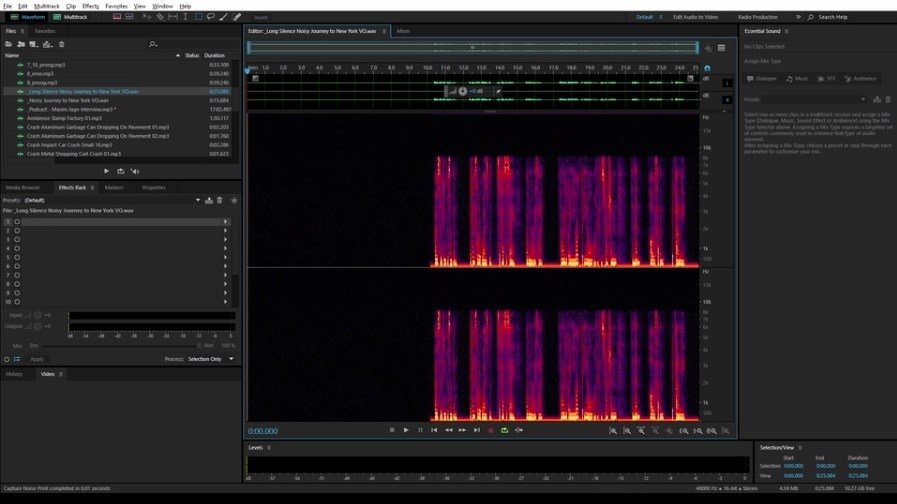
- Adobe audition for podcasts full#
- Adobe audition for podcasts software#
- Adobe audition for podcasts professional#
Here are our top five, and what you’ll need to budget for them.
Adobe audition for podcasts software#
We frequently get asked for podcast editing software recommendations. Whether you’re an experienced audio nerd or a podcast beginner, there are a range of tools on the market at a variety of different price points to suit your budget. You will be taken back to the waveform viewįinally, save the file (Ctrl+S) using the same procedure as the first waveform file.With nearly six years of weekly podcasts under our belts, we know the importance of choosing podcast editing software that will fit around your workflow.
Adobe audition for podcasts full#
In the top menu, go to Multitrack -> Mixdown Session to New File -> Entire Session to export the full multitrack session back into waveform. Now, if you want, you can return to the voice compressor to make minor changes if needed Once the above are completed, you should have an orderly project with transitions, fades, and volume control.

An introduction in the first track, the first paragraph to a second, etc). If you have recorded your podcast in multiple sessions, add each of these to a new track ( eg.
Adobe audition for podcasts professional#
You want your voice to be dynamically consistent, mellow, and intelligible, which gives the recording the characteristics of a professional studio microphone.Īfter using Media Browser to import files to the project, you can simply drag and drop them into an empty track. Use the play and loop functions on the main interface to assist you. It changes for everyone and varies between each track. Once again, use the sliders within the pop-up menu to adjust your compression. In Effects Rack, it should be labelled as Track 1- otherwise you'll be adding effects to the wrong track Make sure you have selected the voice track in the main area before following the above steps. Once it opens, you'll reach this default multitrack workspace:Įnsure you have applied the compressor to the correct track. Master: Stereo (strongly recommended, even for podcasting).Sample Rate: 48000Hz (This must never be lower than an original file).Template: None (Best to start from scratch!!).



Press Ctrl+S to bring up the one-time save menu. Now that you've successfully recorded a project in waveform, it's time to save it. Press Apply to close the window when complete Saving a Waveform Recording Having no ambience may sound a little awkward and unnatural. You should aim for a clear, articulated recording of your own voice with little - but never zero - background noise.


 0 kommentar(er)
0 kommentar(er)
